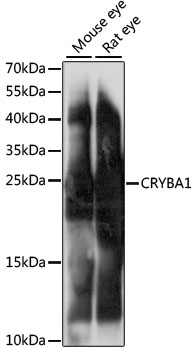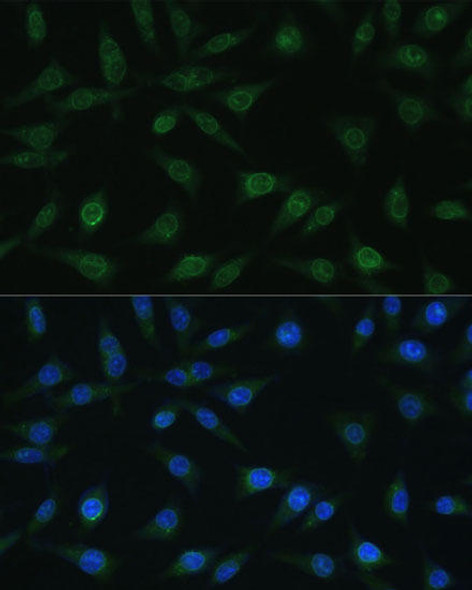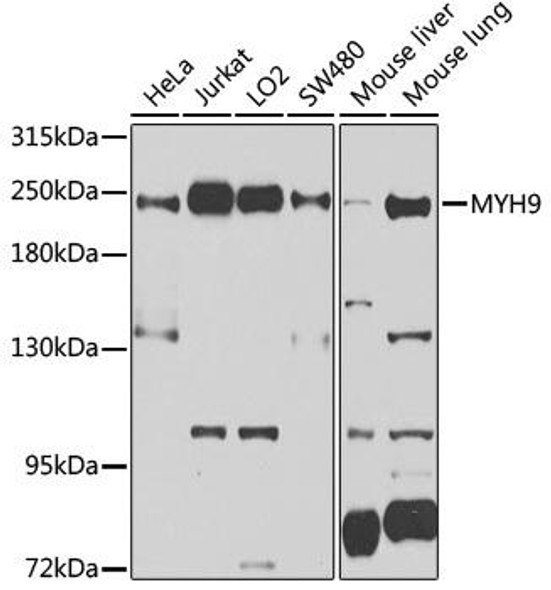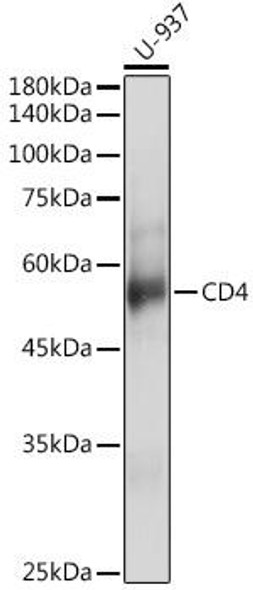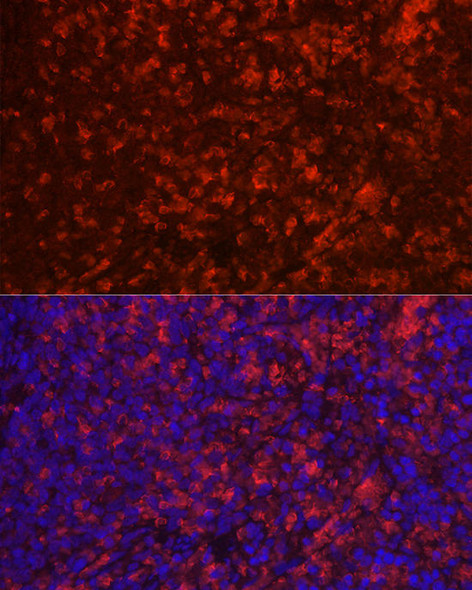Description
CRYBA1 Rabbit Polyclonal Antibody (CAB15267)
The CRYBA1 Polyclonal Antibody (CAB15267) is a valuable tool for researchers studying CRYBA1, a member of the beta-crystallin family involved in maintaining the transparency and refractive index of the eye lens. This antibody, raised in rabbits, exhibits high reactivity with human samples and has been validated for use in Western blot applications.CRYBA1 is essential for the structural integrity of the lens and mutations in this gene have been implicated in cataract formation.
By detecting CRYBA1 protein, researchers can gain insights into lens development and function, as well as explore its role in age-related cataracts and other eye disorders. The CRYBA1 Polyclonal Antibody is a valuable tool for studies in ophthalmology, vision research, and molecular genetics.
| Product Name: | CRYBA1 Rabbit Polyclonal Antibody |
| SKU: | CAB15267 |
| Size: | 20uL, 100uL |
| Isotype: | IgG |
| Host Species: | Rabbit |
| Reactivity: | Mouse,Rat |
| Immunogen: | Recombinant fusion protein containing a sequence corresponding to amino acids 1-215 of human CRYBA1 (NP_005199.2). |
| Sequence: | METQ AEQQ ELET LPTT KMAQ TNPT PGSL GPWK ITIY DQEN FQGK RMEF TSSC PNVS ERSF DNVR SLKV ESGA WIGY EHTS FCGQ QFIL ERGE YPRW DAWS GSNA YHIE RLMS FRPI CSAN HKES KMTI FEKE NFIG RQWE ISDD YPSL QAMG WFNN EVGS MKIQ SGAW VCYQ YPGY RGYQ YILE CDHH GGDY KHWR EWGS HAQT SQIQ SIRR IQQ |
| Tested Applications: | WB ELISA |
| Recommended Dilution: | WB,1:200 - 1:2000 |
| Synonyms: | CRYB1; CTRCT10; CRYBA1 |
| Positive Sample: | Mouse eye,Rat eye |
| Conjugate: | Unconjugated |
| Cellular Localization: | cytoplasm, lysosome, nucleus |
| Calculated MW: | 25kDa |
| Observed MW: | 25kDa |
Crystallins are separated into two classes: taxon-specific, or enzyme, and ubiquitous. The latter class constitutes the major proteins of vertebrate eye lens and maintains the transparency and refractive index of the lens. Since lens central fiber cells lose their nuclei during development, these crystallins are made and then retained throughout life, making them extremely stable proteins. Mammalian lens crystallins are divided into alpha, beta, and gamma families; beta and gamma crystallins are also considered as a superfamily. Alpha and beta families are further divided into acidic and basic groups. Seven protein regions exist in crystallins: four homologous motifs, a connecting peptide, and N- and C-terminal extensions. Beta-crystallins, the most heterogeneous, differ by the presence of the C-terminal extension (present in the basic group, none in the acidic group). Beta-crystallins form aggregates of different sizes and are able to self-associate to form dimers or to form heterodimers with other beta-crystallins. This gene, a beta acidic group member, encodes two proteins (crystallin, beta A3 and crystallin, beta A1) from a single mRNA, the latter protein is 17 aa shorter than crystallin, beta A3 and is generated by use of an alternate translation initiation site. Deletion of exons 3 and 4 causes the autosomal dominant disease 'zonular cataract with sutural opacities'.
| Purification Method: | Affinity purification |
| Gene ID: | 1411 |
| Storage Buffer: | Store at -20℃. Avoid freeze / thaw cycles.Buffer: PBS with 0.01% thimerosal,50% glycerol,pH7.3. |


